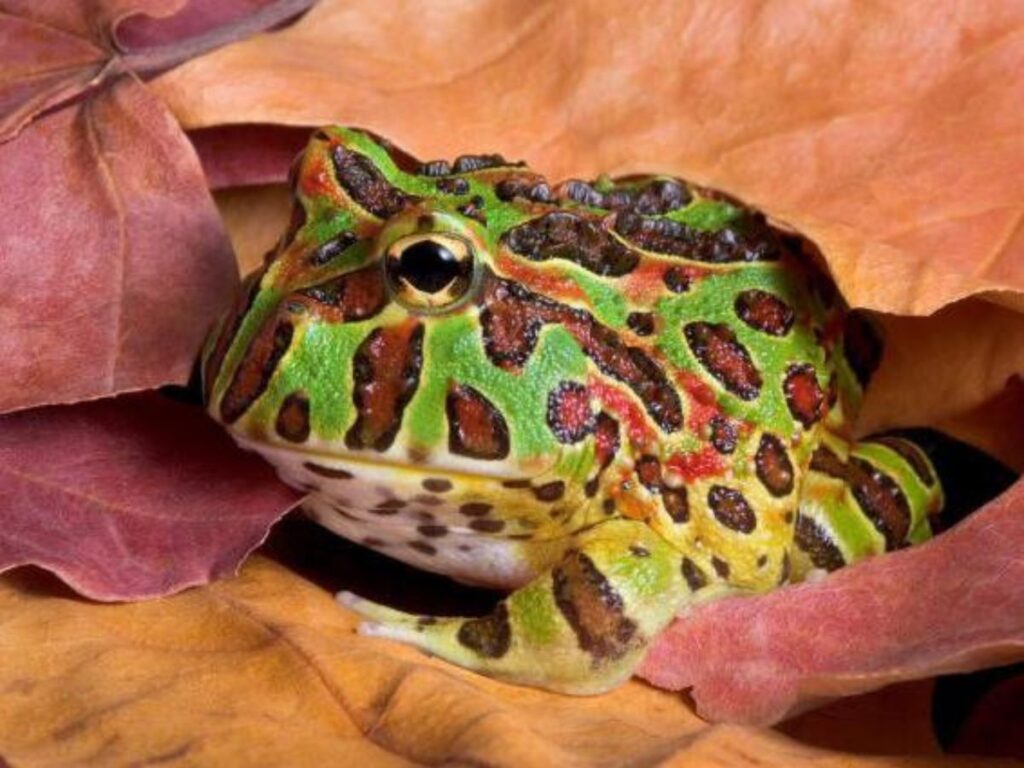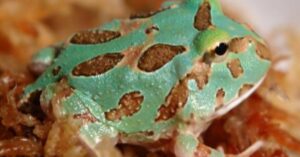🐸 Pacman Frog Gender Differences: Visual Guide
How to Tell the Sex of Your Horned Frog with Confidence
Pacman Frog Gender Differences - At a Glance
Male Pacman frogs are smaller, have dark throats, and often croak, while females are larger, rounder, and usually silent. These differences become noticeable around 6–10 months of age. Use this visual guide to confidently determine your frog’s gender using size, color, sound, and body shape.
One of the most common questions among new Pacman frog owners is: “Is my frog male or female?” Unlike mammals or birds, sexing amphibians isn’t always obvious—especially when they’re young. But once your Pacman frog matures, several visual and behavioral clues can help you figure it out.
In this guide, you’ll learn:
How to tell male vs. female Pacman frogs
Key physical and behavioral differences
When gender traits start showing
Tips for visual identification
What not to rely on
When Can You Tell a Pacman Frog’s Gender?
| Age | Likelihood of Accurate Sexing |
|---|---|
| 0–4 months | Nearly impossible |
| 4–6 months | Unreliable |
| 6–10+ months | Most gender traits become visible |
| Light | Dappled shade—Pacman frogs avoid direct sun |
You’ll need to wait until your frog is at least 6 months old before identifying its sex with confidence.
Male Pacman Frog Traits
| Trait | Description |
|---|---|
| Size | Smaller overall body (3–4.5 inches) |
| Throat Color | Dark or black-colored throat/chest area |
| Croaking | Loud, distinctive calls—especially at night |
| Nuptial Pads | Dark pads on front thumbs (during breeding) |
| Body Shape | Narrower, less rounded torso |
Visual Cues:
Dark patch on throat = male
Call when misted = likely male
Smaller, triangular body = male
Female Pacman Frog Traits
| Trait | Description |
|---|---|
| Size | Larger overall body (4–7 inches) |
| Throat Color | Uniform light or green (no dark patch) |
| Silence | Rarely vocal, usually silent |
| No Thumb Pads | Lacks nuptial (mating) pads on thumbs |
| Body Shape | Broader, rounder body and wider head |

Visual Cues
No croaking = probably female
Round “football” body = female
No dark throat markings = female
Male vs. Female: Side-by-Side Comparison
| Feature | Male | Female |
|---|---|---|
| Size | 3–4.5 inches | 4–7 inches |
| Croaking | Yes (especially at night) | Rare or silent |
| Throat Color | Dark patch or black | Light or same as body color |
| Thumb Pads | Present during breeding season | Absent |
| Body Shape | Narrow and leaner | Rounder and broader |
| Behavior | More vocal, sometimes more active | More sedentary and calm |
What You Can’t Rely On
Color morph: Albino, fantasy, and strawberry morphs can be any gender
Feeding habits: Both sexes can be aggressive eaters
Burrowing frequency: Not a gender indicator
Pet store guess: Often inaccurate unless the frog is mature
How to Confirm Sex with Behavior
Misting the tank: If your frog croaks after a light mist, it’s likely a male.
Vocal activity at night: Persistent sounds = male
Thumb pads: Look for black calluses during breeding season (males only)
FAQ: Determining Pacman Frog Gender
Q: Can I sex a Pacman frog before 6 months old?
A: It’s difficult. Most gender traits develop between 6–10 months.
Q: Do females ever croak?
A: Rarely. If your frog croaks often, it’s almost certainly male.
Q: What if I still can’t tell?
A: If you’re unsure after 10 months, consult a reptile vet or experienced breeder for confirmation.
Final Thoughts
While it can take several months before gender differences show clearly, once your Pacman frog matures, signs like throat color, croaking, body shape, and thumb pads can help you confidently determine whether you have a male or female. Use this visual guide and observe behavior over time to make the right call.
Related Pacman Frog Articles
👉 How to Tell If Your Pacman Frog Is Sick




